|
|
The Hieromartyr Autonomus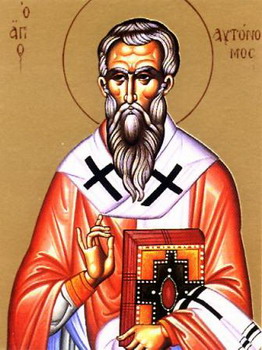 A bishop, he left Italy for Bithynia in Asia during Diocietian"s persecution, going to a place called Soreoi, where he brought many to the Christian faith and built them a church dedicated to the Archangel Michael. He stayed in the house of a devout Christian, Cornelius, whom Autonomus ordained priest and then consecrated bishop. Not far from the town of Soreoi was a place called Limnae, entirely inhabited by pagans. St Autonomus went to this place and quickly brought many to the light by the Gospel of Christ. This roused the pagans, and they hurried one day to the church of the Archangel Michael in Soreoi and, during divine service, slew Autonomus in the altar, killing also many other Christians in the church. In the time of the Emperor Constantine, a noble courtier, Severian, built a church over St Autonomus"s grave. Two hundred years after his death, St Autonomus appeared to a soldier called John. This soldier dug up the saint"s relics and found them to be completely uncorrupt, and many of the sick received healing from them. Thus God glorified him who glorified Him while in the body. A bishop, he left Italy for Bithynia in Asia during Diocietian"s persecution, going to a place called Soreoi, where he brought many to the Christian faith and built them a church dedicated to the Archangel Michael. He stayed in the house of a devout Christian, Cornelius, whom Autonomus ordained priest and then consecrated bishop. Not far from the town of Soreoi was a place called Limnae, entirely inhabited by pagans. St Autonomus went to this place and quickly brought many to the light by the Gospel of Christ. This roused the pagans, and they hurried one day to the church of the Archangel Michael in Soreoi and, during divine service, slew Autonomus in the altar, killing also many other Christians in the church. In the time of the Emperor Constantine, a noble courtier, Severian, built a church over St Autonomus"s grave. Two hundred years after his death, St Autonomus appeared to a soldier called John. This soldier dug up the saint"s relics and found them to be completely uncorrupt, and many of the sick received healing from them. Thus God glorified him who glorified Him while in the body.The Hieromartyr Cornutus (Coronatus), Bishop of Iconium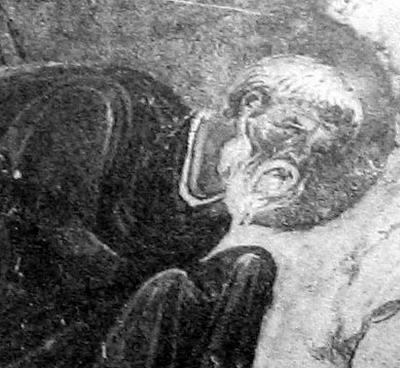 Born in Nicomedia, in the village of Sarsalus, he was already very old when a persecution arose under Decius and Valerian. A torturer, Perinius, came to Nicomedia and began to seek out the Christians. They went out of the city and hid, but their aged bishop would not leave and presented himself to Perinius, proclaiming himself a Christian. The torturer bound him hand and foot and ordered that he be dragged through the town until his blood flowed. He gave his holy soul to God under the sword. Born in Nicomedia, in the village of Sarsalus, he was already very old when a persecution arose under Decius and Valerian. A torturer, Perinius, came to Nicomedia and began to seek out the Christians. They went out of the city and hid, but their aged bishop would not leave and presented himself to Perinius, proclaiming himself a Christian. The torturer bound him hand and foot and ordered that he be dragged through the town until his blood flowed. He gave his holy soul to God under the sword.The Holy Martyr Julian, with his 40 companions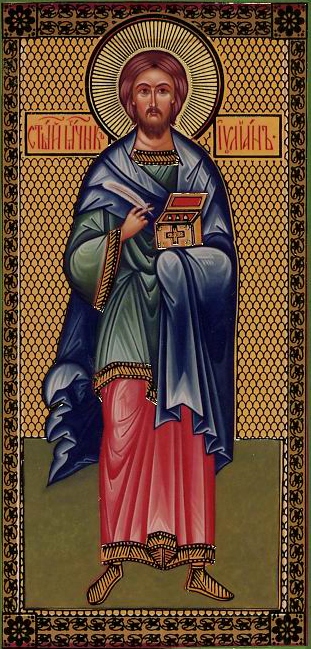 They all suffered in about the year 300, being first tortured and then beheaded. In the face of death, St Julian prayed thus: "To those who take some of my dust, grant, 0 Lord, the forgiveness of their sins and the subduing of their passions; may marauding birds never invade their fields, nor grasshoppers nor caterpillars, nor any other such dangerous or deadly thing; and do Thou receive my soul in peace." They all suffered in about the year 300, being first tortured and then beheaded. In the face of death, St Julian prayed thus: "To those who take some of my dust, grant, 0 Lord, the forgiveness of their sins and the subduing of their passions; may marauding birds never invade their fields, nor grasshoppers nor caterpillars, nor any other such dangerous or deadly thing; and do Thou receive my soul in peace."Our Holy Father Daniel of Thasos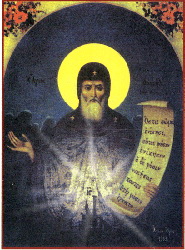 An ascetic and the founder of a great monastery, he was a contemporary of St Joannicius the Great and was present when Joannicius visited the island of Thasos, where the people besought him to free them from an infestation of snakes. The saint prayed to God, and the snakes, in large numbers, rushed into the sea and were drowned. An ascetic and the founder of a great monastery, he was a contemporary of St Joannicius the Great and was present when Joannicius visited the island of Thasos, where the people besought him to free them from an infestation of snakes. The saint prayed to God, and the snakes, in large numbers, rushed into the sea and were drowned.The Holy Martyrs Macedonius, Tatianus and TheodulusThey suffered for Christ the Lord in the time of Julian the Apostate at Myropolis in Phrygia. They were harshly tortured for destroying the statue of an idol, and burned on an iron grid until they gave their souls to God. While they were burning over the fire, these courageous men cried out mockingly to the torturer: "Why not try our meat, to see if it"s done!", and also, like the glorious archdeacon Laurence: "Turn us over; we"re done on this side!" Seeing and hearing the holy martyrs on the fire, the torturers were infinitely more confused and frightened than they were.
Hieromartyr Theodore, archbishop of Alexandria (606)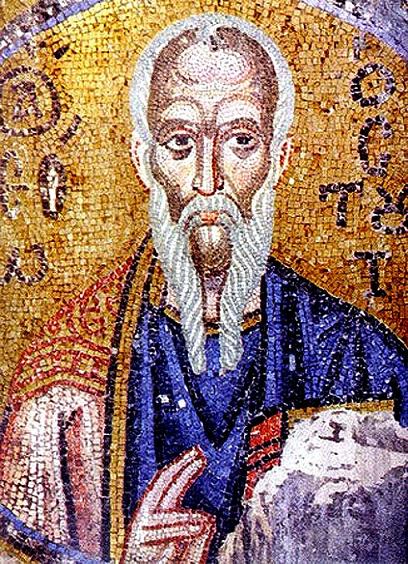 The PriestMartyr Theodore, Bishop of Alexandria, was born in EEypt in the city of Alexandria. This city was famed in the Church Universal by many a martyr and confessor: from the holy Evangelist Mark, First-Martyr of Alexandria (+ 63, Comm. 25 April), to Saint Athanasias the Great (Comm. 18 January and 2 May), a pillar and confessor of Orthodoxy (+ 373). Regrettably, historical records do not provide us precise details about the time of life and the deeds of holy Bishop Theodore, but the Church of Christ throughout all times has preserved the name of the priest-martyr in its diptych lists... The PriestMartyr Theodore, Bishop of Alexandria, was born in EEypt in the city of Alexandria. This city was famed in the Church Universal by many a martyr and confessor: from the holy Evangelist Mark, First-Martyr of Alexandria (+ 63, Comm. 25 April), to Saint Athanasias the Great (Comm. 18 January and 2 May), a pillar and confessor of Orthodoxy (+ 373). Regrettably, historical records do not provide us precise details about the time of life and the deeds of holy Bishop Theodore, but the Church of Christ throughout all times has preserved the name of the priest-martyr in its diptych lists...Venerable Athanasius (1401)and his disciple Venerable Athanasius (1395)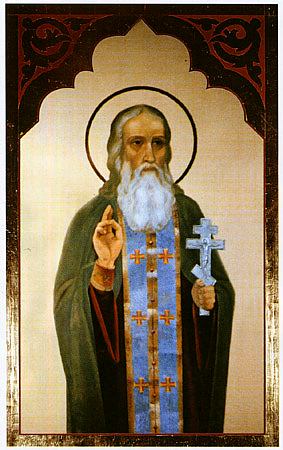 The Monk Athanasii (Afanasii) of Serpukhov, in the world Andrei, was born at Obonezhsk Pyatinainto the family of the priest Avksentii and his wife Maria. He was from youth inclined towards prayerful self-absorption and renunciation of the world, and he sought for a worthy guide in monastic doings... The Monk Athanasii (Afanasii) of Serpukhov, in the world Andrei, was born at Obonezhsk Pyatinainto the family of the priest Avksentii and his wife Maria. He was from youth inclined towards prayerful self-absorption and renunciation of the world, and he sought for a worthy guide in monastic doings...Venerable Bassian of Tiksna (Vologda) (1624)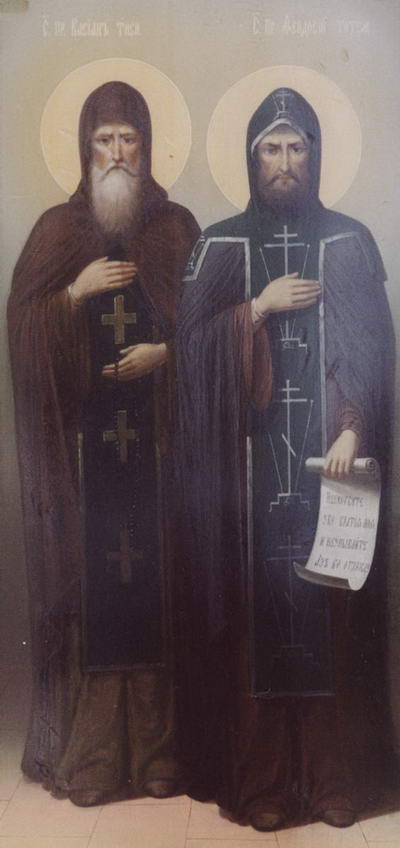 The Monk Vassian of Tiksnensk (Totemsk), in the world Vasilii, was a peasant from the village of Strelitsa (by other accounts, from the village of Burtsevo), near the city of Tot'ma, and he was by trade a tailor. Leaving his family, he accepted monasticism under the Monk Theodosii (Feodosii) of Totemsk in the Sumorinsk monastery at the River Sukhona, where he spent several years in works and obediences... The Monk Vassian of Tiksnensk (Totemsk), in the world Vasilii, was a peasant from the village of Strelitsa (by other accounts, from the village of Burtsevo), near the city of Tot'ma, and he was by trade a tailor. Leaving his family, he accepted monasticism under the Monk Theodosii (Feodosii) of Totemsk in the Sumorinsk monastery at the River Sukhona, where he spent several years in works and obediences...Translation of the relics (1704) of Righteous Simeon of Verkhoturye (1642)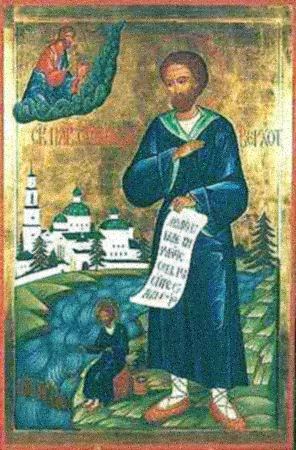 Righteous Simeon of Verkhotursk (+ 1642) was a nobleman, but he concealed his origin and led the life of a beggar. He walked through the villages and for free sewed half-coat and other over-clothes, primarily for the poor. While doing this he deliberately failed to sew something – either a glove, or a scarf, for which he endured abuse from his customers. The ascetic wandered much, but most often he lived at a churchyard of the village of Merkushinsk not far from the city of Verkhotur' (Perm outskirts)... Righteous Simeon of Verkhotursk (+ 1642) was a nobleman, but he concealed his origin and led the life of a beggar. He walked through the villages and for free sewed half-coat and other over-clothes, primarily for the poor. While doing this he deliberately failed to sew something – either a glove, or a scarf, for which he endured abuse from his customers. The ascetic wandered much, but most often he lived at a churchyard of the village of Merkushinsk not far from the city of Verkhotur' (Perm outskirts)...Hieromartyr Dositheus of Tbilisi, Georgia (1795)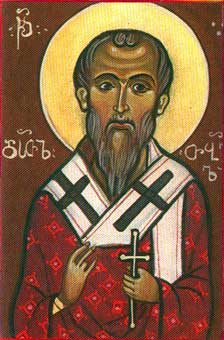 Thirty-five thousand Persian soldiers marched toward Georgia in the year 1795. The Georgian king Erekle II (1762–1798) and his two thousand soldiers declared war on the invaders as they were approaching Tbilisi. The Georgians won the first skirmish, but many perished in the fighting. The enemy was shaken and was preparing to flee the battleground, when several traitors reported to Aqa Muhammed Khan that King Erekle had lost nearly his entire army... Thirty-five thousand Persian soldiers marched toward Georgia in the year 1795. The Georgian king Erekle II (1762–1798) and his two thousand soldiers declared war on the invaders as they were approaching Tbilisi. The Georgians won the first skirmish, but many perished in the fighting. The enemy was shaken and was preparing to flee the battleground, when several traitors reported to Aqa Muhammed Khan that King Erekle had lost nearly his entire army... |